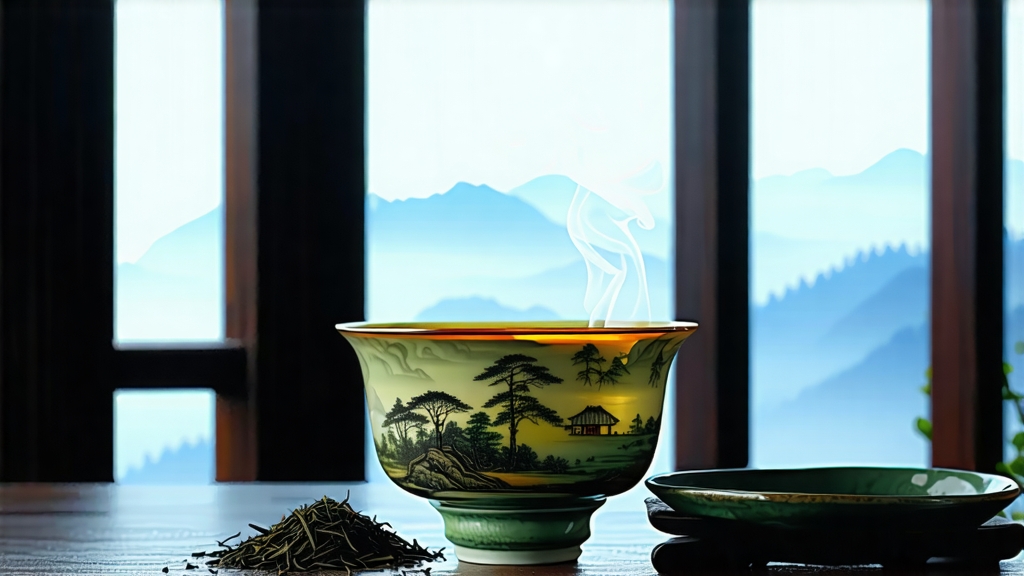
Long before Assam, Ceylon or Earl Grey entered the lexicon of tea drinkers, a small village in the Wuyi massif of China’s Fujian province produced the very first fully oxidised leaf. Locals call it Zhengshan Xiaozhong; the West knows it as Lapsang Souchong. Revered as the progenitor of all black teas, this smoky, wine-dark brew has journeyed from Ming-dynasty military outpost to the mahogany-paneled drawing rooms of Victorian London, and today it is re-conquering the palates of specialty cafés from Brooklyn to Berlin. To understand Lapsang Souchong is to witness the moment when green tea culture pivoted into the age of black, carried on plumes of pine smoke and the entrepreneurial spirit of 17th-century tea monks.
History: accident, ingenuity and global appetite
The accepted legend places the birth of Lapsang Souchong in 1568 at the Tongmu Guan pass, where raiding armies forced farmers to abandon freshly picked leaves. Upon return, the leaves had wilted and reddened. Rather than discard them, the farmers rushed the oxidation by drying over pinewood fires to meet the next market day. The resulting tea, dark, mellow and laced with campfire sweetness, sold spectacularly. By 1604 Dutch traders had ferried it to Europe, where it fetched higher prices than green tea because it survived the long sea voyage without losing flavor. When Catherine of Braganza introduced tea to the English court in 1662, the caddies labeled “Bohea” (Wuyi) contained Lapsang Souchong; the taste for smoked black tea became inseparable from the British identity. Centuries later, the East India Company would attempt to replicate the tea in Assam and Ceylon, but without the Wuyi terroir and pine resin, those gardens birthed entirely different black teas, leaving Lapsang Souchong still anchored to its rocky cradle.
Terroir: why only Tongmu tastes like Tongmu
The Wuyi Mountains form a UNESCO dual heritage site where subtropical mists rise from the Jiuqu (Nine-Bend) River, cooling the granite crevices in which ancient tea bushes cling. Day-night temperature swings of 15 °C slow leaf growth, concentrating polyphenols and volatile aromatics. The soil is a mineral-rich laterite locals call “rotten rock,” free-draining yet water-retentive, forcing roots to dive three metres for nutrients. Within this 600 km² core lies the 48 km² Tongmu Nature Reserve, the only place where legally protected Lapsang Souchong may be produced. Outside the gate, even neighboring villages cannot use the designation; their teas are sold simply as “smoked black.” Thus geography, ecology and regulation conspire to keep supply microscopically small—barely 50 tons a year—rendering authentic Tongmu Lapsang rarer than silver-tip white tea.
Cultivar and leaf grade: two faces of the same origin
All traditional Lapsang Souchong derives from the Xiao Zhong (Small Leaf) cultivar, a Camellia sinensis var. sinensis strain with oval leaves only 4 cm long, ideally picked as two leaves and a bud. Within this narrow genetic band, two stylistic branches have evolved. The first, “Classic Smoke,” is the export legacy: leaves are withered over pine fires, oxidised, then hot-smoked again in bamboo baskets lined with fir resin. The second, “Unsmoked Zhengshan,” emerged after 2005 for the domestic market that had turned away from heavy smoke; it relies solely on long withering and charcoal baking to coax natural lychee-sweet notes. Both share the same mountain provenance but diverge in processing, offering modern drinkers a choice between campfire nostalgia and mineral clarity.
Craft: twelve steps from dew to dusk
Picking begins at 5 a.m. when dew still weighs down the amino acids. Only buds that have “opened fish-mouth” are plucked, ensuring the ideal surface-to-volume ratio for oxidation. The leaves are then laid on bamboo trays inside a qinglou—three-storey wooden structure unique to Tongmu. Ground-floor pinewood embers maintain 28 °C; upper trays experience a gentle rising smoke that replaces the sun absent in the narrow gorge. After four hours the leaves lose 30 % moisture and emit a baked-apple aroma